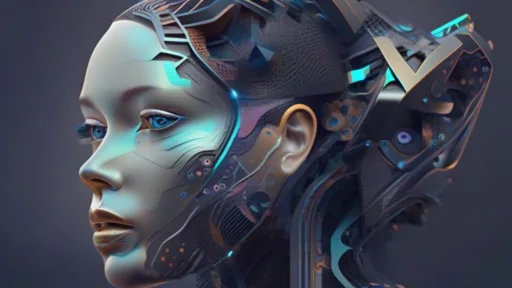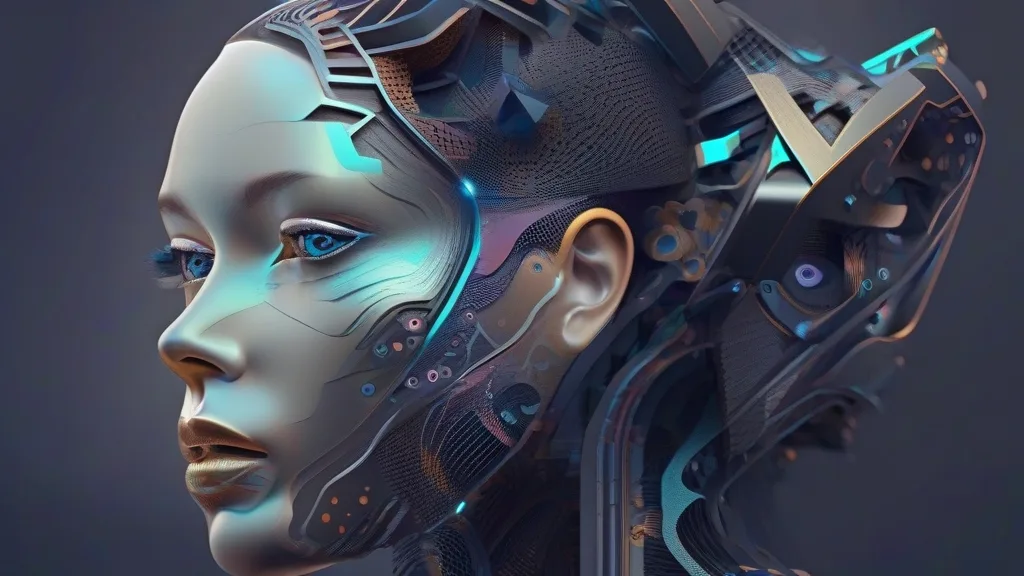Generative AI models have revolutionized different areas by empowering the creation of modern information, such as content, pictures, music, and more. Creating a generative AI show can be a fulfilling challenge. In this web journal, we’ll walk you through the handle step-by-step.
Step 1: Get it the Basics
Before plunging into improvement, it’s basic to get it what generative AI is and the sorts of models available:
Generative AI: A subset of manufactured insights centered on producing modern substance that is comparable to existing data.
Types of Generative Models:
Generative Ill-disposed Systems (GANs)
Variational Autoencoders (VAEs)
Transformer-based models (e.g., GPT-4)
Step 2: Characterize Your Objective
Identify the particular objective of your generative demonstrate. This might be creating content, pictures, music, or any other sort of information. For instance:
Text era (e.g., chatbots, substance creation)
Image era (e.g., craftsmanship creation, picture enhancement)
Music era (e.g., composing melodies)
Step 3: Accumulate and Plan Data
Data is vital for preparing generative models. Take after these steps to collect and plan your data:
Collect Information: Assemble a huge dataset important to your objective. For case, if you’re building a content generator, collect a assorted set of content documents.
Clean Information: Expel any commotion, copies, and insignificant data from the dataset.
Preprocess Information: Organize the information suitably, such as tokenizing content or resizing images.
import os
import re
import pandas as pd
Illustration: Content Information Preprocessing
def clean_text(text):
content = re.sub(r’s+’, ‘ ‘, content) # Expel additional whitespace
content = re.sub(r’W’, ‘ ‘, content) # Expel non-word characters
content = text.lower() # Change over to lowercase
return text
data = pd.read_csv(‘text_data.csv’)
data[‘cleaned_text’] = data[‘text’].apply(clean_text)
Step 4: Select a Generative Model
Select the fitting generative demonstrate based on your objective:
GANs: Best for picture era. Case designs incorporate DCGAN, StyleGAN.
VAEs: Valuable for creating varieties of existing data.
Transformers: Perfect for content era. Striking models incorporate GPT-3, GPT-4, BERT.
Step 5: Set Up Your Improvement Environment
Prepare your improvement environment with the vital apparatuses and libraries:
Programming Dialect: Python is the most commonly utilized language.
Libraries: TensorFlow, PyTorch, and Embracing Face’s Transformers are fundamental libraries.
Hardware: Guarantee you have get to to effective GPUs for preparing, or consider utilizing cloud-based arrangements like AWS, Google Cloud, or Azure.
Introduce fundamental libraries
pip introduce tensorflow burn transformers
Step 6: Construct and Prepare the Model
Now, let’s construct and prepare your generative show. Here, we’ll appear an illustration utilizing a GAN for picture generation.
import tensorflow as tf
from tensorflow.keras.layers purport Thick, Reshape, Straighten, Conv2D, Conv2DTranspose, LeakyReLU
from tensorflow.keras.models consequence Sequential
Generator Model
def build_generator(latent_dim):
show = Sequential()
model.add(Dense(256, input_dim=latent_dim))
model.add(LeakyReLU(alpha=0.2))
model.add(Dense(512))
model.add(LeakyReLU(alpha=0.2))
model.add(Dense(1024))
model.add(LeakyReLU(alpha=0.2))
model.add(Dense(28 * 28 * 1, activation=’tanh’))
model.add(Reshape((28, 28, 1)))
return model
Discriminator Model
def build_discriminator():
demonstrate = Sequential()
model.add(Flatten(input_shape=(28, 28, 1)))
model.add(Dense(512))
model.add(LeakyReLU(alpha=0.2))
model.add(Dense(256))
model.add(LeakyReLU(alpha=0.2))
model.add(Dense(1, activation=’sigmoid’))
return model
Compile GAN
def compile_gan(generator, discriminator):
discriminator.compile(loss=’binary_crossentropy’, optimizer=’adam’, metrics=[‘accuracy’])
discriminator.trainable = False
gan_input = tf.keras.Input(shape=(latent_dim,))
generated_image = generator(gan_input)
gan_output = discriminator(generated_image)
gan = tf.keras.Model(gan_input, gan_output)
gan.compile(loss=’binary_crossentropy’, optimizer=’adam’)
return gan
latent_dim = 100
generator = build_generator(latent_dim)
discriminator = build_discriminator()
gan = compile_gan(generator, discriminator)
Step 7: Prepare the GAN
import numpy as np
Stack and preprocess data
(x_train, ), (, _) = tf.keras.datasets.mnist.load_data()
x_train = (x_train – 127.5) / 127.5 # Normalize to [-1, 1]
x_train = np.expand_dims(x_train, axis=-1)
Preparing parameters
epochs = 10000
batch_size = 64
sample_interval = 1000
Preparing loop
for age in range(epochs):
# Prepare Discriminator
idx = np.random.randint(0, x_train.shape[0], batch_size)
real_images = x_train[idx]
commotion = np.random.normal(0, 1, (batch_size, latent_dim))
fake_images = generator.predict(noise)
real_labels = np.ones((batch_size, 1))
fake_labels = np.zeros((batch_size, 1))
d_loss_real = discriminator.train_on_batch(real_images, real_labels)
d_loss_fake = discriminator.train_on_batch(fake_images, fake_labels)
d_loss = 0.5 * np.add(d_loss_real, d_loss_fake)
# Prepare Generator
commotion = np.random.normal(0, 1, (batch_size, latent_dim))
valid_labels = np.ones((batch_size, 1))
g_loss = gan.train_on_batch(noise, valid_labels)
# Print progress
if age % sample_interval == 0:
print(f”{epoch} [D misfortune: {d_loss[0]} | D precision: {d_loss[1]}] [G misfortune: {g_loss}]”)
Step 8: Produce and Test Modern Data
Once your demonstrate is prepared, utilize it to create unused data.
import matplotlib.pyplot as plt
Produce modern images
noise = np.random.normal(0, 1, (10, latent_dim))
generated_images = generator.predict(noise)
Plot the images
for i in range(10):
plt.subplot(2, 5, i+1)
plt.imshow(generated_images[i, :, :, 0], cmap=’gray’)
plt.axis(‘off’)
plt.show()
Step 9: Send the Model
Deploy your generative demonstrate to make it available to users.
from jar moment Jar, ask, jsonify
import numpy as np
app = Flask(name)
@app.route(‘/generate’, methods=[‘POST’])
def generate():
information = request.get_json()
commotion = np.random.normal(0, 1, (1, latent_dim))
generated_image = generator.predict(noise)
generated_image = (generated_image[0, :, :, 0] * 127.5 + 127.5).astype(np.uint8).tolist()
return jsonify({‘generated_image’: generated_image})
if title == ‘main‘:
app.run()
Step 10: Screen and Update
After sending, ceaselessly screen the model’s execution and make upgrades as needed.
Case: Spare the model
generator.save(‘generator_model.h5’)
Illustration: Stack the model
from tensorflow.keras.models purport load_model
generator = load_model(‘generator_model.h5’)
After building and preparing your generative AI show, you can utilize a few devices to streamline the handle of creating modern information, sending your show, and observing its execution. Here are a few suggested devices for each step:
Tools for Producing Information with Generative AI
- Jupyter Notebooks
Use Case: Intelligently advancement and testing.
Features: Type in and execute code in a web-based environment, visualize yields, and record the improvement process.
Example:
import numpy as np
import matplotlib.pyplot as plt
noise = np.random.normal(0, 1, (10, latent_dim))
generated_images = generator.predict(noise)
for i in range(10):
plt.subplot(2, 5, i+1)
plt.imshow(generated_images[i, :, :, 0], cmap=’gray’)
plt.axis(‘off’)
plt.show()
- Flask/FastAPI
Use Case: Sending the show as an API.
Features: Make Serene APIs to serve your demonstrate, empowering integration with other applications.
Example:
from carafe purport Carafe, ask, jsonify
import numpy as np
app = Flask(name)
@app.route(‘/generate’, methods=[‘POST’])
def generate():
clamor = np.random.normal(0, 1, (1, latent_dim))
generated_image = generator.predict(noise)
generated_image = (generated_image[0, :, :, 0] * 127.5 + 127.5).astype(np.uint8).tolist()
return jsonify({‘generated_image’: generated_image})
if title == ‘main‘:
app.run()
- Docker
Use Case: Containerizing the show for steady deployment.
Features: Bundle your application and its conditions into a holder, guaranteeing it runs the same in any case of the environment.
Example:
dockerfile
Dockerfile
FROM python:3.8
WORKDIR /app
COPY . /app
RUN pip introduce -r requirements.txt
CMD [“python”, “app.py”]
- TensorFlow Serving
Use Case: Serving TensorFlow models in production.
Features: Effectively send and serve machine learning models in a adaptable manner.
Example:
Spare the model
tf.saved_model.save(generator, “path/to/saved_model”)
Utilize TensorFlow Serving to serve the model
docker run -p 8501:8501 –name=tf_serving_generator
–mount type=bind,source=$(pwd)/path/to/saved_model,target=/models/generator
-e MODEL_NAME=generator -t tensorflow/serving
- Kubernetes
Use Case: Conveying and overseeing containerized applications at scale.
Features: Mechanize sending, scaling, and operations of application holders over clusters of hosts.
Example:
Kubernetes Sending YAML
apiVersion: apps/v1
kind: Deployment
metadata:
title: generator-deployment
spec:
reproductions: 3
selector:
matchLabels:
app: generator
template:
metadata:
labels:
app: generator
spec:
containers:
- title: generator picture: your-docker-image ports:
- containerPort: 8501
Tools for Checking and Overhauling the Model
- Prometheus and Grafana
Use Case: Observing demonstrate execution and framework metrics.
Features: Collect and visualize measurements, make dashboards, and set up alerts.
Example:
Prometheus Configuration
global:
scrape_interval: 15s
scrape_configs:
- job_name: ‘generator’ static_configs:
- targets: [‘localhost:8501’]
- MLflow
Use Case: Following tests, overseeing models, and conveying in production.
Features: Record and inquiry tests, log measurements, and send models.
Example:
import mlflow
import mlflow.keras
mlflow.start_run()
mlflow.keras.log_model(generator, “generator_model”)
mlflow.end_run()
- Kubeflow
Use Case: Overseeing ML workflows on Kubernetes.
Features: Construct, send, and oversee end-to-end machine learning workflows
Example:
Kubeflow Pipeline YAML
apiVersion: argoproj.io/v1alpha1
kind: Workflow
metadata:
generateName: generator-pipeline-
spec:
entrypoint: main
templates:
- title: main dag: tasks:
- title: train layout: train
- title: serve layout: serve conditions: [train]
- title: train container: picture: your-training-image command: [“python”, “train.py”]
- title: serve container: picture: your-serving-image command: [“python”, “serve.py”]
By utilizing these apparatuses, you can streamline the prepare of producing modern information, sending your generative AI demonstrate, and guaranteeing it performs ideally in generation situations.
Conclusion
Developing a generative AI demonstrate includes a arrangement of well-defined steps, from understanding the essentials to sending and observing the demonstrate. By taking after this direct and utilizing the code pieces given, you can make effective generative models that open up modern conceivable outcomes in different areas.





